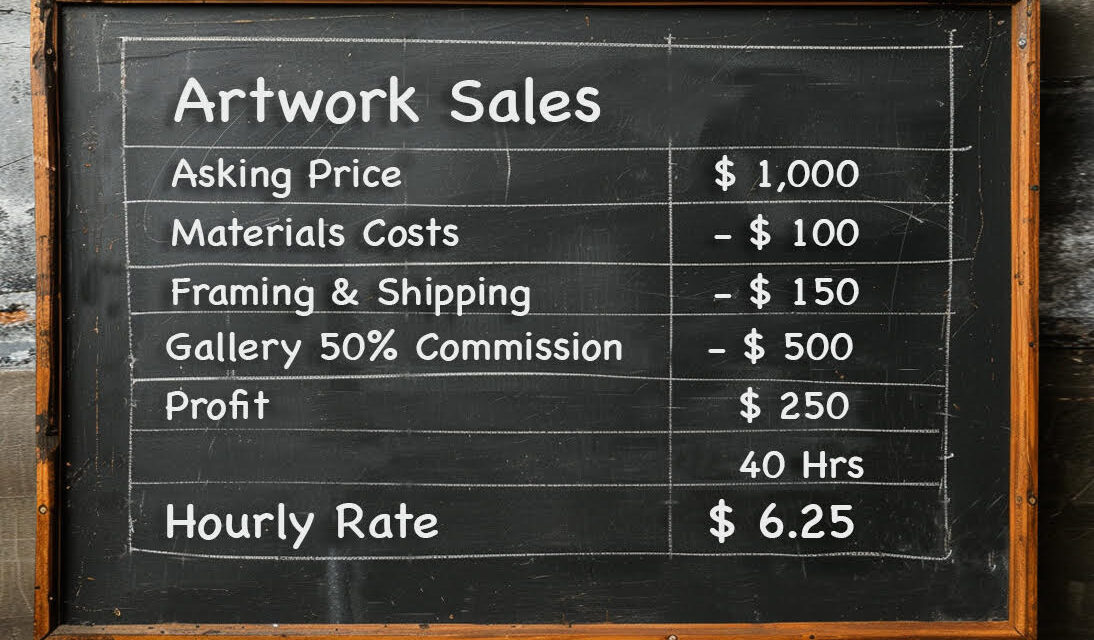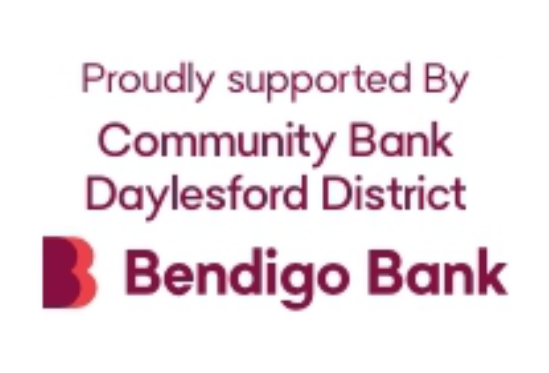Morgan Williams
What value do you place on creativity? If we think of the production of art as an occupation worthy of remuneration, then it’s probably good to consider its worth in monetary terms. Many artists would be happy with $50 an hour. If we take the image above of an average of 40 hours to create an artwork, then $2k would be the amount they should be paid for their artwork. But is that enough?
One of my business mentors taught me the rule of thirds many years ago to ensure I charged enough to survive financially in the design industry. You basically figure out how much you need to make per hr to live and then multiply that by three. A third goes towards ongoing costs (rent, materials, utilities etc). A third goes into admin (bookkeeping, tax, marketing etc). And the third left over becomes your wage, or ‘profit’ to live off. Therefore, artists probably need to charge $6k for their 40 per hr artwork if they need $50 an hour to survive.
Now if we apply the same principles to a gallery selling the artwork we arrive at $12k. Most retail spaces mark-up 100%, some more. Galleries often only charge 40% on sales though this would make the artwork only $8,400. That figure is not enough to be sustainable unless they have other income, own their premises, or sell a lot of their own art. Many businesses over time try to increase profit, and usually do that by getting their products cheaper, which often involves lower and lower wages. Hence artists under-charging for their creative endeavours and not being paid what they need to survive.
The Dutch are the only society that has paid citizens a wage to be a full-time artist. In 1949 they created the first government sponsored fund for artists. Artwork would be brought by the government and calculated into a weekly salary. The program ran for many years and the Dutch government was quickly inundated with art. By the 70s they started only taking half the artwork produced. They still couldn’t distribute their purchases quickly enough. Every Dutch institution was covered in art. It was given away as gifts. It was even cut up into little notebook covers. Storage became a big issue. They began giving art back to artists. By the late 80s the program was reduced. The scheme finally ended in 2012. The Dutch government is still responsible for over half a million artworks from the program, that’s aside from work in public collections and galleries.
Most western governments have arts programs that support artists, usually project based, but not ongoing living wages. Public participation in visual arts has increased immensely in recent years. We now see similar annual visitation at the MCG (Melbourne Cricket Ground) and NGV (National Gallery of Victoria). Around 3 million people visit both these cultural icons annually. Public enjoyment and acknowledgment of “The Arts” has grown significantly over time, to the point where national government funding for the arts is now roughly three times that of sports. Sport however attracts far more in sponsorship, advertising, revenue, wages and media attention.
What value do you place on art? Many artists work other jobs to fund their artistic career. Becoming a full-time artist is often not an easy road. Many artists talk of being compelled to create, like it’s a secrete inner force driving them.
Once an artist dies, their work might increase in value, sometimes rapidly. Other market forces come into play. The law of supply and demand takes effect. Suddenly there is a limited supply – no more work can be produced. Their career can be seen as a whole, and collectors or dealers want works from particular periods of time. Again, the artist doesn’t see the fruits of their labour. Their family might stand to gain if they inherit a large body of work.
Most of us can’t afford $12k for an artwork, but we can enjoy artists creations for free in galleries. There’s no entry fee at Radius, so pop down and enjoy some free art – to us it’s all priceless!
As usual we have lots on the creative calendar coming up. Spoontacular opens May 25th at 3pm. It’s a visual feast that includes dining and performance art. We also have Films, Family Constellations and Live Music. To help keep all those creative bodies fit we now have weekly Chi Gong & Tai Chi too. If it’s arts you crave and community you cherish, look no further than Radius!
Morgan Williams is the co-director with Kim Percy of Radius Art Space. His art practice spans a 30 year period and explores a diverse range of mediums and topics.











